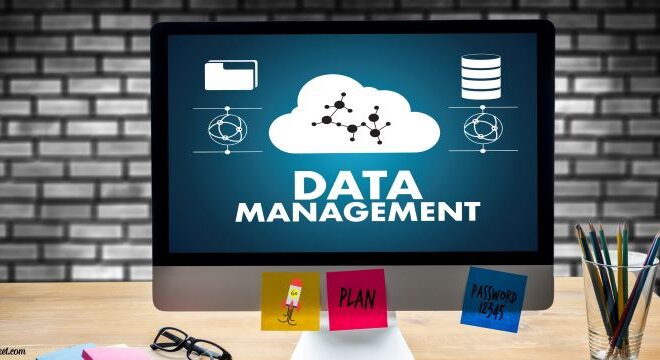
Comprehensive Strategies to Mitigate Cybersecurity Risks
Table of Contents
- Introduction
- Current Cybersecurity Threats
- Conducting a Risk Assessment
- Effective Cybersecurity Strategies
- Importance of Employee Training
- Technological Solutions
- The Role of Continuous Monitoring
- Final Thoughts
The digital age has ushered in an era where cybersecurity risks are ever-present and constantly evolving. With businesses increasingly relying on digital systems, understanding and mitigating these risks have become pivotal tasks. Effective cybersecurity strategies not only protect data but also maintain the trust of stakeholders. Utilizing a unified cybersecurity platform can help organizations streamline their risk management efforts. This platform integrates various security measures into a cohesive system, making it easier to monitor and respond to threats comprehensively. As cyber threats grow more sophisticated, businesses must stay ahead by adopting advanced cybersecurity frameworks. These frameworks not only guard against external threats but also ensure that internal security measures are robust and scalable. Through continuous improvement and innovation, organizations can create a resilient cybersecurity posture that safeguards their data and integrity in the long term.
Current Cybersecurity Threats
The modern cybersecurity environment is complete with dangers, from sophisticated malware to phishing attempts. Developing a strong defense starts with an understanding of these dangers. Recent patterns indicate that ransomware attacks have significantly increased and are now affecting organizations all around the world. Data integrity and financial stability are seriously threatened by ransomware, a sort of malicious software that blocks access to a computer system until a certain amount of money is paid. Phishing schemes, in which cybercriminals pose as trustworthy organizations in order to get sensitive data, and advanced persistent threats (APTs), which entail sustained and focused cyberattacks, are two more prevalent dangers. Additionally, as Internet of Things (IoT) devices proliferate, new cybersecurity risks have emerged, necessitating that enterprises modify their cybersecurity plans.
Conducting a Risk Assessment
A comprehensive risk assessment helps identify vulnerabilities within an organization. This process involves evaluating existing security measures, identifying potential threats, and assessing the impact of these threats on business operations. A thorough risk assessment forms the foundation for any effective cybersecurity strategy by highlighting the areas that require immediate attention and investment. The risk assessment process generally includes asset inventory, threat modeling, and vulnerability analysis. By creating a detailed inventory of all digital assets and identifying potential threats, organizations can prioritize their resources effectively. Additionally, conducting a business impact analysis helps understand the potential consequences of specific threats, which, in turn, guides decision-making regarding risk mitigation measures.
Effective Cybersecurity Strategies
Implementing effective cybersecurity strategies requires a multi-faceted approach. This includes employing both preventive and detective controls. Utilizing advanced threat detection systems, maintaining up-to-date software, and employing robust encryption techniques can drastically reduce the likelihood of a successful attack. Research from the SANS Institute suggests that layered security approaches are usually the most effective. This strategy involves implementing multiple defensive layers to protect against various attack vectors simultaneously. Preventive controls such as firewalls, secure coding practices, and access control mechanisms form the first line of defense. Detective controls, including intrusion detection systems and continuous monitoring solutions, help identify and mitigate threats as they occur. Combining these approaches with a robust incident response plan ensures that organizations are well-prepared to handle any cybersecurity event swiftly and efficiently.
Importance of Employee Training
Employee training is one cybersecurity component that is frequently disregarded. Numerous frequent assaults can be avoided by training staff members to identify and address such threats. Promoting a security-aware culture inside the company guarantees that each member of the team plays a crucial role in cybersecurity endeavors. Frequent security exercises and training sessions can dramatically lower the likelihood that phishing scams and other social engineering assaults will be successful. Employees are also better able to comprehend their roles and duties in maintaining security when clear cybersecurity rules and procedures are established. This covers instructions on handling data, managing passwords, and spotting shady activity. Staff personnel are kept alert and knowledgeable about new risks by receiving regular training and updates, which strengthens the security posture as a whole.
Technological Solutions
Utilizing the right technological solutions can significantly enhance an organization’s cybersecurity posture. Solutions such as advanced firewalls, intrusion detection systems, and antivirus software play crucial roles in protecting against cyber threats. Investing in these technologies ensures that the organization is prepared to face cyber threats head-on by employing cutting-edge tools and methodologies.
Additionally, adopting cybersecurity frameworks and compliance standards such as ISO/IEC 27001 or the NIST Cybersecurity Framework can provide structured guidelines for implementing effective security measures. Integrating these standards into the organization’s security policies ensures a comprehensive and systematic approach to cybersecurity, encompassing all critical aspects from risk management to incident response.
The Role of Continuous Monitoring
Continuous surveillance enables organizations to identify and address threats immediately. This proactive approach guarantees prompt detection and prevention of possible security breaches before causing substantial harm. Continuous monitoring and routine security audits are crucial aspects of an effective cybersecurity program, guaranteeing that security measures stay relevant and current. Deploying a Security Information and Event Management (SIEM) system enables organizations to gain immediate visibility into security incidents occurring throughout the company. SIEM systems assist in quickly recognizing abnormal patterns and potential threats by analyzing data from multiple sources. Consistently updating and patching systems helps to minimize vulnerabilities that attackers could take advantage of, ensuring the security and integrity of the organization’s digital assets.
Final Thoughts
Mitigating cybersecurity risks requires a comprehensive and dynamic approach. Understanding current threats, conducting thorough risk assessments, employing effective strategies, and utilizing advanced technological solutions are all crucial elements. Ultimately, the commitment to continuous improvement and vigilance in cybersecurity practices will safeguard an organization’s success and security in the digital age.



